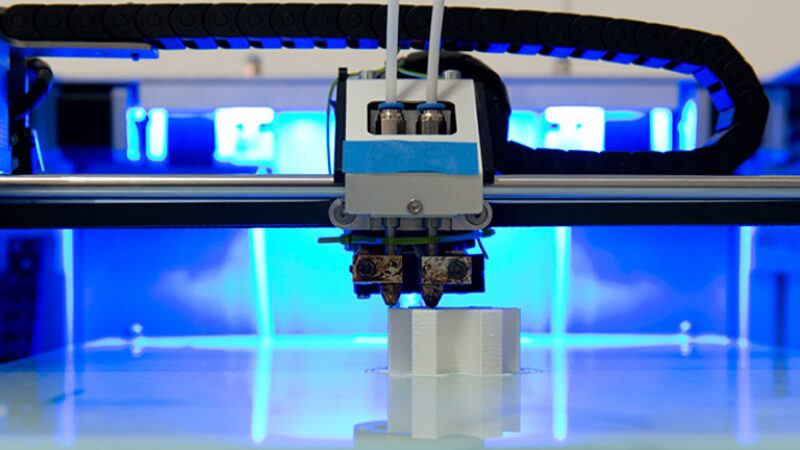Innovation is a hallmark of oil and gas operations. As companies look to survive in the new economy created by the oil price downturn, the need to find new, cost-efficient technology for manufacturing, data processing, or even overall project management, is greater than ever, so much so that the industry is examining other industries for products and processes that may have crossover appeal.
That examination was the topic of a panel discussion at the Unconventional Resources Technology Conference in July, where a panel of scientists from firms and laboratories spoke about emerging technologies and new uses for old technologies outside the sphere of traditional petroleum that could have a disruptive impact on the industry.
Medical Science Crossovers
Olga Koper, oil and gas market leader at Battelle, discussed some of the projects the science research firm has developed in the medical field that could provide significant benefit to operating companies.
One such device, the NeuroLife Neural Bypass Technology, helps paralyzed patients regain conscious control of their fingers, hands, and wrists. The system uses a neuroprosthetic microchip that, when implanted in the brain, forms an electronic neural bypass that circumvents disconnected pathways in the nervous system. Battelle applied machine-learning algorithms to decode neuronal activity in the brain and control the use of a person’s forearm muscles. The chip picked up signals from the brain and transmitted the data to a computer with Battelle’s decoding software installed. The decoded data were then transmitted to a proprietary neuromuscular electrical stimulation system that provided isolated finger movements, essentially allowing a person to control a paralyzed hand by translating his thoughts.
Battelle partnered with surgeons at The Ohio State University to implant the system in the brain of a man paralyzed from the chest down. The surgeons implanted a 4×4-mm chip into the motor cortex area of the man’s brain, the area responsible for voluntary movements. Two years into the trial, he is able to transfer objects, stir liquids, and swipe a credit card, among other actions.
Koper said the algorithms behind the NeuroLife technology could apply to oil and gas projects, where owners, operators, project managers, and on-site personnel consistently engage in real-time decision making while stringing together large amounts of data. The microchip used in the medical case is capable of collecting 30,000 samples/sec across 96 electrodes, producing a total of 2.88 million data points/sec, making it potentially useful hardware for a variety of management systems.
“There’s a lot of data, and it has to be filtered, you have to see machine learning of the right data transferred into specific motions,” Koper said. “With big data, the real-time decision making, this is what’s happening right now in the oil and gas industry. We have the technology, but there is not yet that direct type of application. We have to start thinking, how will we do this 10, 20, or even 50 years down the road? Where are some of the new areas where this will be a useful technology?”
In 2014, Battelle acquired Healthcare Colloquium, a company founded to improve patient and financial outcomes in hospital treatment. The company had previously done research to flag early indicators of risk for heart failure in asymptomatic patients, and with Battelle’s clinical predictive analytic software, these efforts have now been expanded to include early warnings of kidney failure and diabetes. Koper said similar algorithms could be used to help operators analyze operational data such as flow rates. It may also help them make optimal decisions about what type of equipment they may need for a project.
“The algorithm to predict kidney failure is a very similar algorithm to determine what type of electrical submersible pump you might need on a site,” Koper said. “Sometimes a diverse application could very much impact oil and gas.”
New Ideas in Old Places
George Koperna said that, over time, the amount of time between the introduction of a new technology and its application in industry has shrunk considerably, and that the key to quick adoption of a new technology is often having the right people at a company or in an industry understand its value. Koperna, vice president at Advanced Resource International, said that the increasing influence of data analytics in exploration and production (E&P) activities is a product of the increased awareness of its utility among company decision makers.
“They have been doing this for a long time, but it’s just a matter of bringing it out, it’s a matter of having people understand that this can be useful. It doesn’t replace physics, but it’s a tool in the toolkit. With all the data collection and the computing applications, it’s a real tool for E&P companies to leverage these big data sources,” Koperna said.
Like Koper, Koperna pointed to the medical industry as a source of innovation, though he said the oil and gas industry could benefit from using older technologies in a new way. He referenced a paper (Zahasky and Benson 2016) that proposed the use of positron emission tomography (PET) to provide direct imagery of dynamic single-phase and multiphase fluid flow in porous media.
First utilized in 1961, the PET scan is an imaging test in which a special dye with radioactive tracers is injected intravenously and absorbed into a person’s organs and tissues, after which a scanner highlights the tracers to measure such functions as blood flow, oxygen use, and metabolism. The PET scanner used in the study is different from a traditional scanner in that it has a significantly smaller system diameter, which Zahasky and Benson wrote gave it a higher resolution of the imagery.
The authors wrote that one of the advantages PET scanners provide in quantifying flow is that the tracers do not measurably change the fluid’s properties.
Even renewable energy sources may be a valuable tool for E&P activities. Koperna cited a joint industry project (JIP) launched in 2015 by DNV GL developed to use a floating wind turbine to power water injection in a standalone system to maximize oil recovery. The JIP, titled WIN WIN (Wind-Powered Water Injection), has three partners outside of DNV: ExxonMobil, ENI, and the Norwegian Research Council. Previous partners included Statoil and Nexen Petroleum.
In the first phase of the project, the partners determined the technical feasibility of the WIN WIN concept, as well as whether the concept was capable of meeting performance targets while remaining cost-competitive compared to traditional water injection systems. After the completion of the initial phase in April, the partners moved on to the second phase, which will focus on physical lab testing of the electrical systems. The phase is expected to run over the course of 1–2 years and will lead to the publication of an application guideline document. If the testing proves successful, DNV said a full-scale prototype could be available by 2020.
“Electricity costs are going up. It’s pretty expensive. If you can come up with a new technology that’s cost-effective and helps you with production, deliver more energy, and at least offset some of the [carbon dioxide], that’s beneficial,” Koperna said of the WIN WIN concept.
Additive Manufacturing
Yarom Polsky, group leader for the Sensors and Embedded Systems group at the Oak Ridge National Laboratory, said he believed the interaction between subject matter experts and creative minds will ultimately drive innovation in the energy sector, primarily in the additive manufacturing of materials.

Defined by ASTM standard F2792-10 as “the process of joining materials to make objects from 3D model data, usually layer upon layer,” additive manufacturing for oil and gas operations is not an entirely new concept. In 2014, researchers at ExxonMobil published a paper (ISOPE-I-14-595) exploring the topic. Additive manufacturing began as a method to quickly produce component prototypes, but in other industries such as aerospace, it is now being used to manufacture metal alloy components with complex geometries that traditional manufacturing methods cannot replicate.
Ernst & Young’s 2016 report on additive manufacturing identified some immediate benefits for industry. It may reduce the need for the storage and production of spare parts, some of which may never be used. It could help reduce transportation costs by allowing operators to manufacture more parts on site, and it may allow for the faster production of parts that are tailored to the requirements of a specific site. But there are issues with its adoption.
The EY report cited concerns about quality and liability. By moving manufacturing to users, it is unclear who would be accountable for product functionality and potential hazards, or how regulations would change. Also, some 3D-printing techniques are not foolproof. The EY report said that direct metal laser sintering and electron beam melting can produce rough finished surfaces, and that additive manufacturing as a whole has been criticized for poor surface quality.
While it is still an emerging technology, Polsky said additive manufacturing could help further streamline the supply chain.
“People like to talk about additive manufacturing as a disruptive technology that’s going to replace conventional methods in a manufacturing system, but if you think about it, that may not always be the case. Sometimes what you’re going to be doing is replacing an inefficient or costly step in a conventional manufacturing process, and that by itself will change how things are done,” Polsky said.
For Further Reading
Bouton, C.E., Shaikhouni, A., et al. Restoring Cortical Control of Functional Movement in a Human with Quadriplegia. Nature 533: 247–250. doi.10.1038/nature17435
Camisa, J.A. and Verma, V. 2014. Additive Manufacturing and 3D Printing for Oil and Gas—Transformative Potential and Technology Constraints. International Ocean and Polar Engineering Conference, Busan, Korea, 15–20 June 2014. ISOPE-I-14-595. 978-1-880653-91-3.
Zahasky, C. and Benson, S.M. 2016. Phase Saturation Validation and Tracer Transport Quantification Using MicroPET in a Heterogeneous Sandstone Core. International Symposium of the Society of Core Analysts, Snow Mass, Colorado, 21–26 August 2016. SCA2016-028.
Ernst & Young. 2016. If 3D printing has changed the industries of tomorrow, how can your organization get ready today? EYG no. 02810-163GBL.

